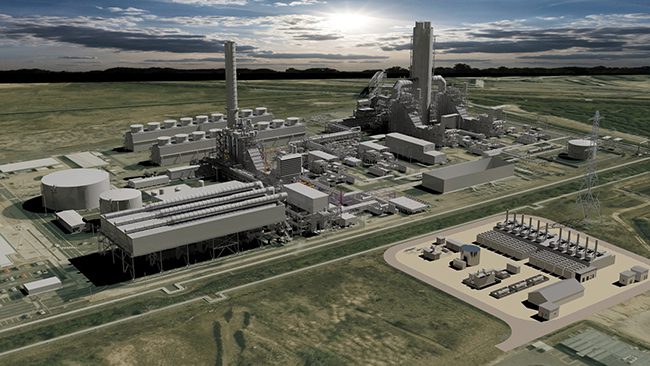Engineering the Largest Post-Combustion Carbon Capture Plant
As part of the UK’s Humber Zero initiative, VPI Immingham’s gas-fired combined heat and power (CHP) plant will be home to the world’s largest post-combustion carbon capture facility.
The Humber region is home to many of the UK’s critical industries, including power generation, chemicals manufacturing, and refining. Together, the facilities in the region emit more than 12 million tonnes of CO2 every year. Their decarbonization is pivotal in achieving the UK’s ambition to reach carbon neutrality by 2050.
 |
|
1. In April, VPI announced plans to expand its Immingham energy hub by 350 MW. In addition to the new rapid-response power generation, VPI said planning and permitting applications for the site’s carbon capture plant had also been submitted. Courtesy: VPI |
VPI—a power generator and owner of a 1,260-MW combined cycle natural gas power plant (Figure 1) based in Immingham, UK, adjacent to the Humber Oil Refinery—is set to play a key role in decarbonizing the region. It has plans to transform its existing facility into the largest post-combustion carbon capture plant of its type in the world. This carbon capture technology aims to reduce the CO2 intensity of its gas-fired power station by up to 3.3 million tonnes per annum, starting with two of its three gas turbines and its two auxiliary boilers’ exhausts.
This equates to a quarter of the total CO2 produced by facilities in the region every year. Once the project is complete, the equipment will capture more than 95% of the CO2 from the plant’s flue gasses followed by treatment, conditioning, and compression for export into the region’s shared CO2 transport and storage system.
Retrofitting Carbon Capture Technology to a Highly Thermally Efficient CHP Plant
While carbon capture has been around for decades, the technology hasn’t been deployed at this scale before. As the Immingham power station is already operational, a key challenge was developing a viable approach to retrofit carbon capture technology to the plant’s existing equipment. A further challenge was added by the age of the asset, as the power station has been operational for more than 19 years and the original plant wasn’t designed with carbon capture in mind.
To put forward a viable approach that would maximize the utilization of proven technologies and minimize risk, front-end engineering design (FEED) work included technology validation studies for each of the key technologies and first-of-a-kind applications. Research and vendor engagement were undertaken to understand how the technologies had been used elsewhere and confirm whether the design and equipment specifications were suitable.
Carrying out the validations and risk assessments allowed the team to better understand the project’s complexities and identify potential gaps between existing technology and the proposed application. Subsequently, the team developed the design and delivery strategy for the project covering engineering, procurement, construction, and commissioning remits.
Following this, it was determined that Shell’s CANSOLV CO2 technology is the optimal tool for capturing the CO2 emitted from the gas before it is compressed, transported, and stored under the seabed. Shell’s technology has successfully been implemented in other facilities and, while the project represents new size and scale requirements, the research undertaken provides confidence that it is the optimal solution for carbon capture on this scale.
Improving the Project with New Collaborations
VPI Immingham isn’t the only heavy industrial facility that will benefit from the Humber Zero initiative. Net zero is, in large, an infrastructure challenge, which requires a much greater deal of collaboration than times past if the world is to achieve net zero by 2050.
With collaboration and scale front of mind, Worley is also providing front-end design services to integrate Shell’s CANSOLV CO2 technology and expand the carbon capture capabilities at the adjacent oil refinery on-site. This will enable both projects to share the same CO2 export facility, which will connect to pipelines to transport the CO2 for sequestration in fields in the North Sea.
The two project teams worked together to assess and mitigate common risks and uncertainties such as CO2 metering, compression, materials selection, and overall technology integration between the projects. The teams also collaborated to support complementary execution plans such as construction laydown space, site access, and transport and storage network interface.
Leading the Way in Decarbonising Baseload Electricity Generation
Although they are first-of-their-kind projects now, the Immingham carbon capture and storage (CCS), and Humber Oil Refinery projects would be major milestones on the UK’s decarbonization journey and could pave the way for many more carbon capture projects to support the energy transition. They also provide an example of cross-project and team collaboration, and how to create synergies that will accelerate the path to net zero. Using insight, knowledge, and expertise from traditional energy, the project teams are supporting industrial decarbonization and unlocking the potential for CCS in the energy mix of the future.
—Alex Southall is a project manager with Worley.